Welcome to another lesson from the Hand Embroidery Stitches series! Today, we will learn all about the French Knot stitch and its cousin, the Pistil stitch. French Knot is perfect for creating small knots, tiny teeny flowers, or even filling entire areas with texture and charm.
French Knot Stitch: a foolproof technique
Before we dive into the world of French knots, here are a couple of things to note: tie the thread on both ends is better than just on one end, and we will need to use both hands.
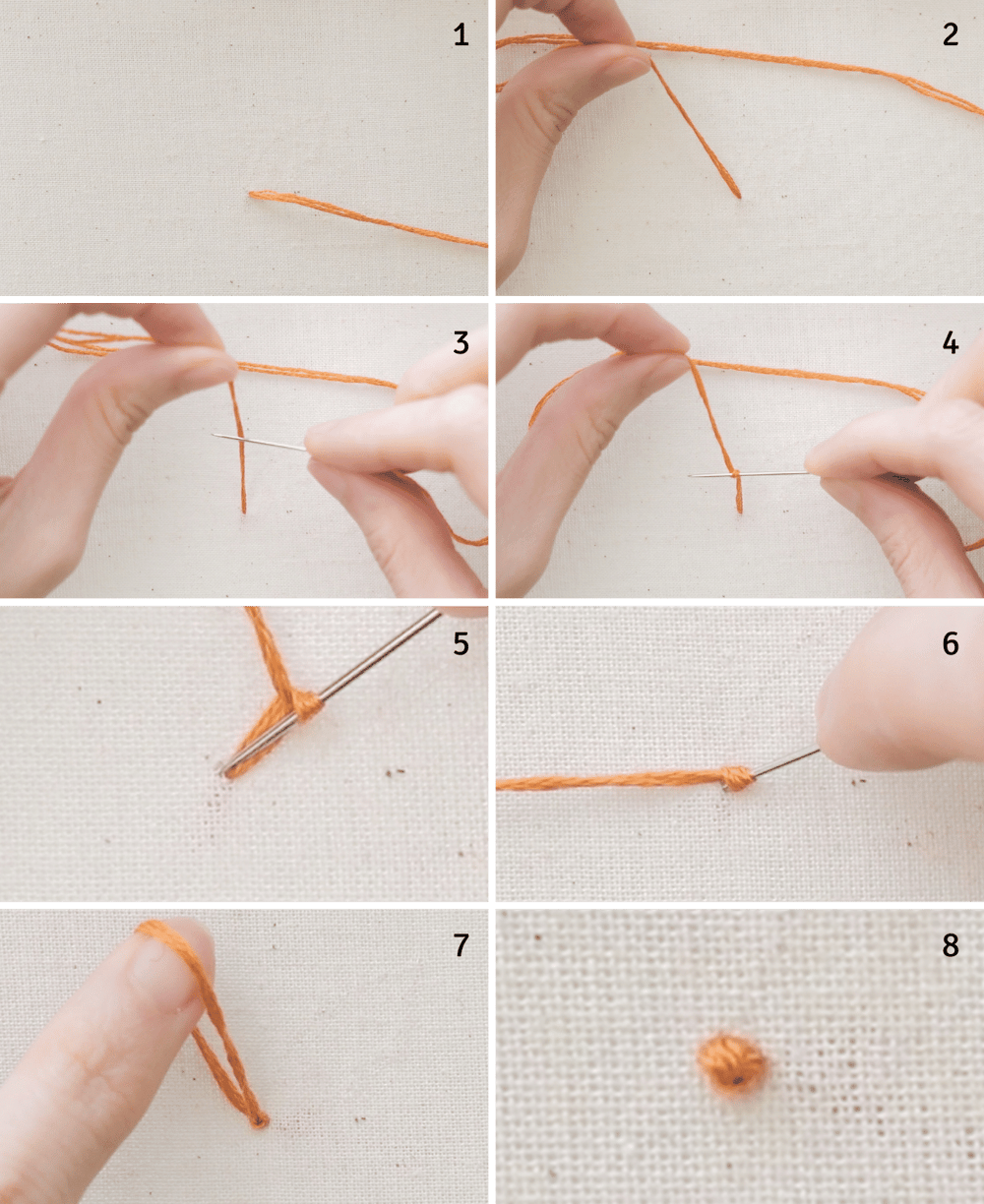
- To begin, bring the needle up through the back of the fabric to where you want your knot.
- Hold the thread taut using the hand that's not holding the needle.
- Place the needle in front of the thread – remember, it should be in front, not behind.
- Wrap it around the needle once (or twice if you want a bigger knot) – note we're wrapping the thread toward us, not away. Then, pull the thread gently, not too tight, just enough to tighten the loops.
- Still keeping the tension, take the needle down very close to the starting point. If you insert the needle too far, your knot will have a tail. If you insert it at the exact starting point, the knot might slip through the hole in the fabric to the other side!
- Don't push the needle all the way through yet. Gently pull the thread as the loops slide down from the needle to the fabric surface.
- Maintain the tension and slowly push the needle all the way through the wraps. I often maintain the thread tension until only a few inches are left on the fabric surface, enough to insert one or two fingers.
- And there you go – a lovely French knot!
Avoid wrapping the thread around the needle more than twice, or it won't look rounded. If you want bigger knots, simply use more strands of thread. Check out these knots with different thread thicknesses.
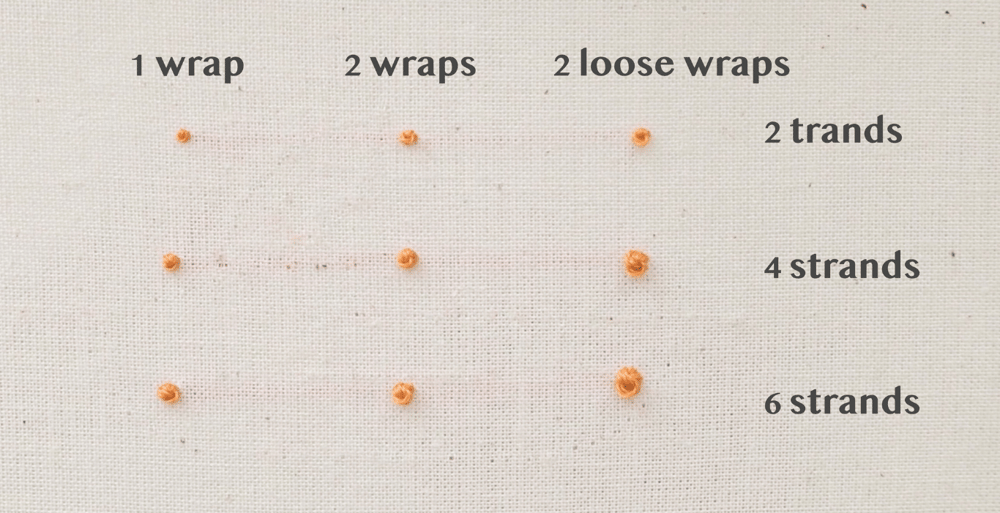
A couple more tips: don't wrap the thread too tight or too loose – just tight enough to ensure the eye of your needle passes through it smoothly. If you make a mistake or end up with knots you don't want, don't be afraid to cut them out entirely instead of trying to unknot them.
A typical French knot is round and compact, but if you prefer a softer, slightly lopsided knot, try loosening the tension a bit. You can practice both styles and see which one you prefer.
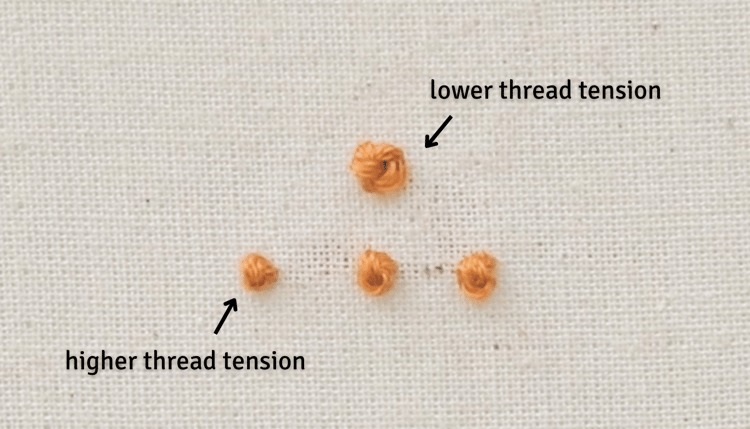
Pistil Stitch: A Knot with a Tail
The Pistil stitch is sometimes called the Long French Knot. It's a variation of the French knot with a tail. All the steps are the same as the French Knot, except you'll insert the needle at a distance from the starting point to form a tail.
You can use this stitch to create the inner of flowers, fun designs like dandelions, or even fireworks!

Practice Pattern
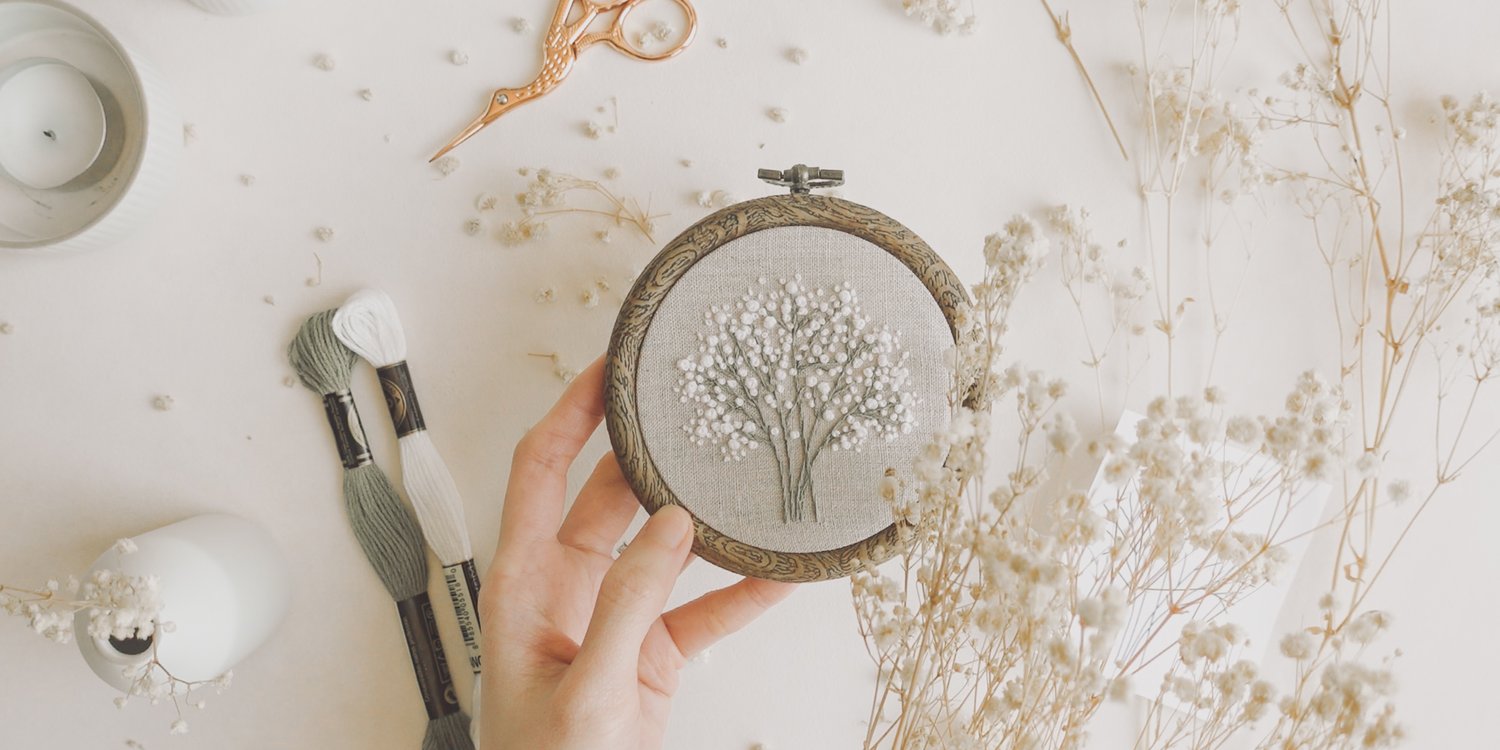
Download this free practice pattern here
Don't forget to watch the YouTube video for step-by-step guide to stitch this pattern.

For the branches, I use the Stem stitch to outline all of them. If the branches are short, you can simply use the Straight stitch.
Then, I go a little crazy with the French knots – let's just say I really go knots! Okay, I'll stop 🤭
I start with some big knots scattered around all the branches. Then I reduce the number of strands to make smaller flowers. It adds beautiful depth to the design.
French knots often have a reputation for being challenging, but they don't have to be. Once you get the hang of them, it's a delightful and relaxing process. The repetitive motion is very soothing and enjoyable. Who knows, maybe one day you'll create a pointillism masterpiece!
So, grab your needle and let's get knotting!


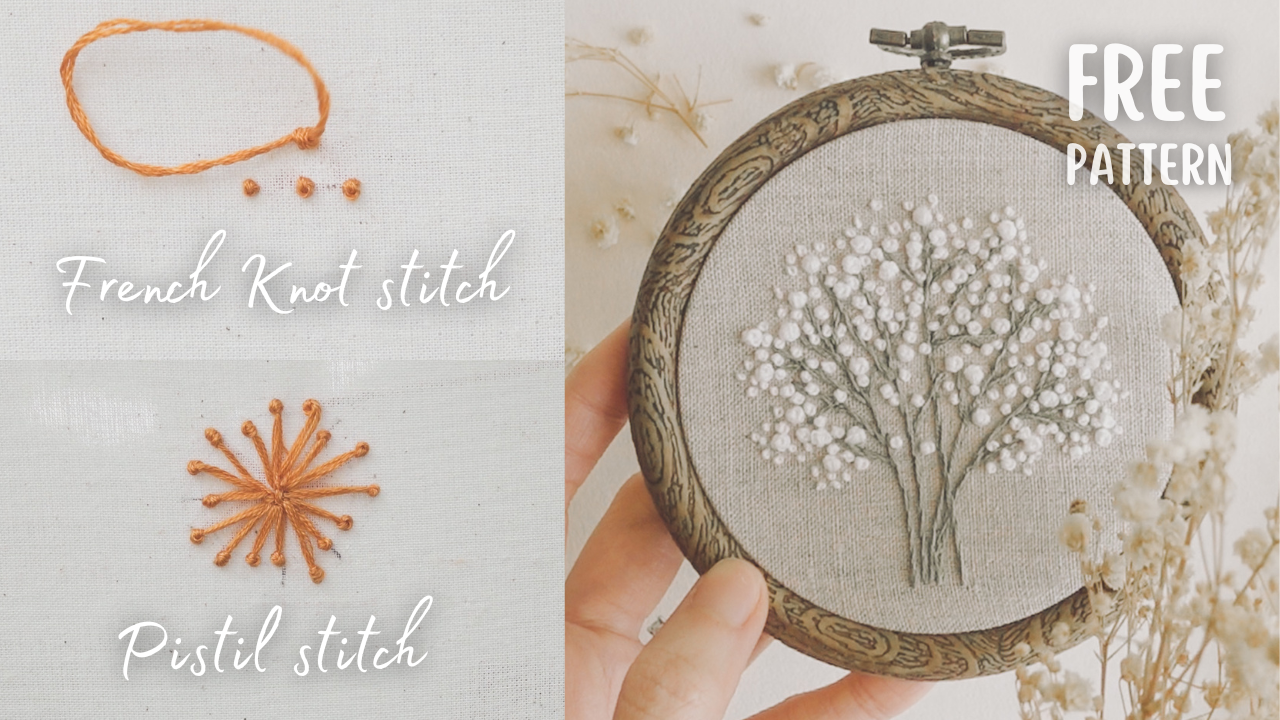
Comments ()